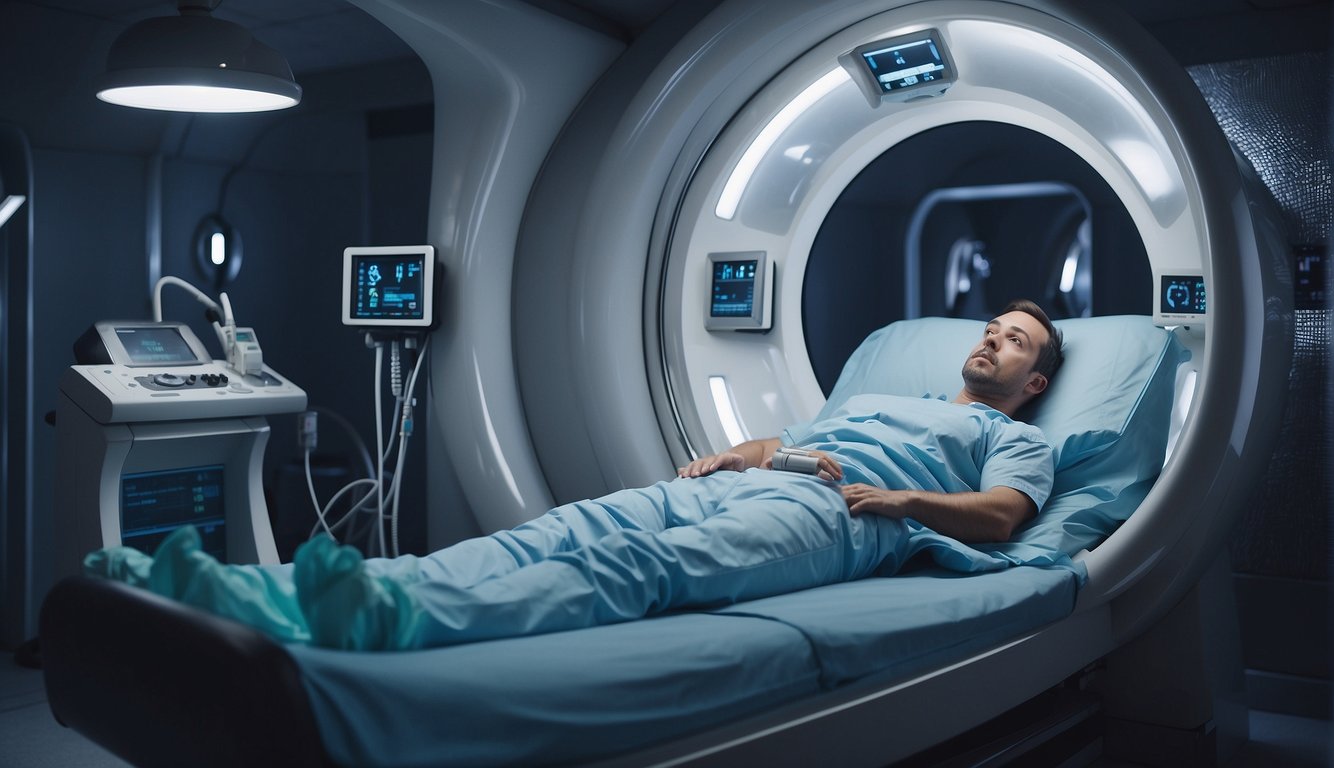888-963-9454
Mon-Sun: 9am-5pm CST
888-963-9454
Mon-Sun: 9am-5pm CST

Experiencing fatigue after hyperbaric oxygen therapy, where you breathe pure oxygen in a pressurized chamber, is common. This tiredness may be due to the body adjusting to the environment's increased pressure and the effort required to breathe the oxygen-rich air, or it could be a sign of oxygen toxicity, which healthcare professionals strive to prevent.
If feeling weary post-treatment, it's important to inform your doctor to ensure that it's a typical reaction or to adjust your therapy plan accordingly.
Curious about the causes of post-hyperbaric treatment fatigue? Read on for more insights.
Hyperbaric Oxygen Therapy (HBOT) is a specialized medical treatment that enhances the body's natural healing process. By increasing the oxygen level in your blood, it accelerates recovery and repair in various conditions.
Hyperbaric Oxygen Therapy involves breathing 100% oxygen in a hyperbaric chamber where the atmospheric pressure is increased up to three times higher than normal. This process saturates your blood with oxygen, which your body can then distribute to organs and tissues.
Hyperbaric treatments are prescribed for a range of conditions, from thermal burns to difficult-to-heal wounds.
Key Components:
Also read:
Undergoing hyperbaric treatment exposes your body to a high-oxygen environment. This can lead to increased oxygenation of blood vessels and tissues.
The elevated pressure facilitates a greater absorption rate of oxygen into the blood, assisting in healing processes and reducing inflammation.
Safety Note: It's important to equalize pressure in your ears by swallowing or yawning during pressure changes to prevent discomfort.
Hyperbaric oxygen therapy is generally well-tolerated; however, fatigue sometimes occurs post-treatment as your body adjusts to the physiological changes.
Hyperbaric Oxygen Therapy (HBOT) has been researched extensively, confirming its effects on the body through both the enriched oxygen provided and the high-pressure environment.
Your body's exposure to pure oxygen under high pressure in a hyperbaric chamber is intended to significantly increase oxygen delivery to your tissues.
Breathing in 100% oxygen can lead to enhanced levels of circulating oxygen. This oxygen infusion can aid in wound healing processes and in treating certain infections. However, it could also induce oxygen toxicity, a condition where too much oxygen can cause damage, most commonly affecting the lungs and central nervous system.
The pressure in a hyperbaric chamber, often set between 1.5 to 3 times the normal atmospheric pressure, can affect your body in various ways.
The compression experienced within the chamber mimics conditions similar to those in diving scenarios. This environment can lead to physical effects such as discomfort or barotrauma to your ears and sinuses due to the inability to equalize pressure.
Additionally, sudden decompression when exiting the chamber could potentially cause decompression sickness or gas embolism if not properly managed.
In both monoplace and multiplace hyperbaric chambers, the risk of these effects is managed by controlling the rate of compression and decompression, allowing your body to adapt to the changes.
After undergoing hyperbaric oxygen therapy (HBOT), it's not uncommon to experience fatigue. Understanding the reasons behind this fatigue can help in managing post-treatment effects effectively.
The primary purpose of HBOT is to increase the amount of oxygen your blood can carry.
Fatigue often sets in post-treatment as your body acclimates to the return to normal oxygen levels. This process can temporarily upsurge metabolic activity and physical stress, which may leave you feeling tired.
After undergoing hyperbaric oxygen therapy (HBOT), it's common to experience fatigue as your body adjusts to the increased oxygen levels and heals. Here are targeted strategies to help manage this post-therapy fatigue.
To combat fatigue following HBOT, it's essential to pace yourself and allow your body to rest. Consider the following tactics:
If fatigue persists or worsens, you should consult your healthcare provider. Key indicators to seek medical advice include:
Assessment of fatigue levels post-HBOT is crucial for monitoring your recovery. Your healthcare provider may:
Effective management of fatigue post-HBOT should focus on improving overall health and supporting the recovery process:
Fatigue following hyperbaric oxygen therapy is common as the body adapts from a pressurized, oxygen-rich setting to normal conditions, which can temporarily boost metabolism and cause tiredness. Effective management of this fatigue is essential for a comfortable recovery.
Despite its benefits for wound healing and infection treatment, it's important to monitor and address persistent fatigue with healthcare professionals to ensure therapy is adjusted for optimal recovery.
Hyperbaric oxygen therapy (HBOT) can be administered daily for certain medical conditions, with each session typically lasting 90 to 120 minutes. The specific frequency and duration are tailored to the patient's needs by a healthcare provider.
Overuse of HBOT can lead to side effects, including oxygen toxicity, with symptoms that may range from lung irritation to seizures. Medical professionals carefully construct treatment protocols to minimize such risks.
Moderate exercise before HBOT may improve circulation and oxygenation. Post-treatment, patients are usually encouraged to rest as the body recuperates. Consult with healthcare providers for guidance on exercise related to HBOT sessions.
Inside a hyperbaric chamber, sensations of pressure akin to those experienced during air travel are common, mainly affecting the ears. Warmth during pressurization may occur. The treatment is generally painless, allowing for rest or sleep.
The information in the Website is provided “as is” and for general information only. It is not intended as medical advice and should not be relied upon as a substitute for professional consultation with a qualified healthcare provider familiar with your individual medical needs.